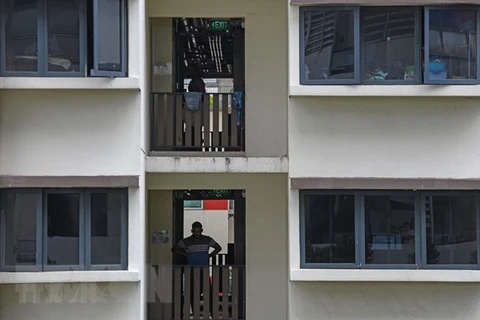Singapore (VNA) – The circuit breaker that Singapore imposed in 2020 to prevent the spread of COVID-19 had an uneven effect on families, according to a research recently published by the S. Rajaratnam School of International Studies.
More than four in 10 households earning less than 1,000 SGD a month and more than three in 10 of those earning between 1,000- 2,900 SGD per month reported having trouble paying for living expenses. On average, fewer than three in 10 of households of all higher income levels reported similar issues.
Respondents from lower-income households were also more likely to have their salaries disrupted by the circuit breaker, during which social gatherings and most activities were banned, movement was restricted and most businesses except essential ones were closed.
On average, more than half of households earning less than 1,000 SGD a month and nearly half of those earning between 1,000 SGD and 2,900 SGD a month reported disruptions to their incomes.
This occurred less frequently with those at higher income levels. For instance, four in 10 households earning between 8,000 SGD and 9,900 SGD a month and fewer than three in 10 households of those earning between 10,000 SGD and 14,900 SGD a month reported disruptions to incomes.
The research polled more than 1,000 citizens and permanent residents every two weeks between May 7 and July 16 last year, for a total of more than 6,000 respondents./.
More than four in 10 households earning less than 1,000 SGD a month and more than three in 10 of those earning between 1,000- 2,900 SGD per month reported having trouble paying for living expenses. On average, fewer than three in 10 of households of all higher income levels reported similar issues.
Respondents from lower-income households were also more likely to have their salaries disrupted by the circuit breaker, during which social gatherings and most activities were banned, movement was restricted and most businesses except essential ones were closed.
On average, more than half of households earning less than 1,000 SGD a month and nearly half of those earning between 1,000 SGD and 2,900 SGD a month reported disruptions to their incomes.
This occurred less frequently with those at higher income levels. For instance, four in 10 households earning between 8,000 SGD and 9,900 SGD a month and fewer than three in 10 households of those earning between 10,000 SGD and 14,900 SGD a month reported disruptions to incomes.
The research polled more than 1,000 citizens and permanent residents every two weeks between May 7 and July 16 last year, for a total of more than 6,000 respondents./.
VNA























